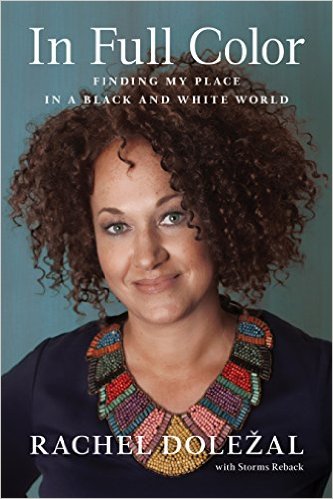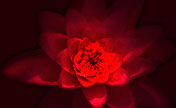
Book Review by Phil Dynan
In Full Color: Finding My Place in a Black and White World
By Rachel Doležal with Storms Reback
In 2015 Rachel Dolezal, a mother, activist and teacher was “outed” as being “white”, although she had a long history of identifying more with Black culture than white culture. This book traces the life of this extraordinary person as she explains how she got to that moment in 2015 when a TV reporter asked her if she was “white or Black”, starting an avalanche of controversy that has resulted in an international discussion of “race identity”.
Whether you have a negative or positive opinion of Dolezal, the story of her childhood as described in this book is captivating. I could relate to parts of it, but definitely much of it is from a world I knew nothing about. It is interesting and genuine. It is also somewhat painful to read and while I felt tears welling up at some passages, it wasn’t just sadness for this person, but for the universality of the horrible things that some people will do to their own children.
Early on, Dolezal says that her great-grandmother possessed qualities that she would come to admire, including “independence, creativity and willpower.” This passage is essential to understanding the Artist Rachel Dolezal and the path she would follow. These are not necessarily traits that will make a person “likeable”, they are traits that will make a person strong and whole. They are essential traits for someone who wants to be an Artist.
And being an artist, whether the author realizes it or not, is perhaps the most important part of her life. Through her art she has power that is not subject to the petty criticisms and misgivings she has had to endure for her culture preference. She has been able to express that preference and her interests in Black history through her art. Like most artists, she is society-fluid – able to communicate with the poorest of the poor and the richest of the rich. She can easily move from one segment of society to another with more ease as an artist than trying to move from “white to Black” as an individual.
Dolezal does address this issue somewhat when she writes about art school: “ Even when the models in my figure class were white, they came out looking Black on my sketch pad . In the end, I embraced the talents I had and stopped trying to please other people or help them understand me.”
But as you read this book, you will find that the road was not easy and the author was not always as sure of herself as reflected in the last quote. She fell, people pushed her, she suffered and she persisted. You learn that she received an MFA from Howard University; she was Historian for a chapter of the Black Students Association on campus; she later was head of an NAACP Chapter in Washington; and she worked with a police advisory board. Her positive contributions to the world around her cannot be disputed – not even by the critics obsessed with skin colour and “race identity”.
Following the lead up to her 2015 incident, Dolezal refused to give-up or “grovel and apologise” to the people criticizing her.
“I’d been slapped in the face with a series of isms—racism, ageism, classism, and sexism…My leadership had been stifled, my voice had been suppressed, and in the end I had been replaced, but I refused to give up.”
I disagree with that statement, and I believe that she has not been “replaced”. She has been temporarily sidelined with injuries inflicted by people that do not possess compassion, critical thought or the ability to accept that each and every person on the planet is “different”. As my favourite poster says “We are all unique, just like everyone else.” Each of us has the right to be who we feel we are. Personal identity should never be subject to public opinion.
Dolezal wrote this book to “set the record straight”. She explains how she got from Point A to Point B with an interesting and well-written story. She did this, even though she knew that giving out so many details made her more vulnerable than ever.
This book is “real and raw and honest” as Dolezal once said of an interview she gave. But the people in our society bent on chasing “isms” (I call them “separatist” as they want to separate people based on things like skin colour, age, gender, sexual preferences, ect) will stay blind to Truth until they can shed their Separatism.
Interesting side note, on Amazon.com the reviews of this book generally fall into two categories: (1) People who have purchased the book and read it; and (2) people who have not purchased or read the book but want to make personal attacks on Dolezal. The people who are “verified purchasers” give the book very high marks; the other crowd - who generally haven’t bothered to read the book – seem to have a campaign to drag the book’s ratings down by giving it the lowest marks possible. Some of those same people also have placed “comments” on the positive reviews, almost always personal or cruel remarks that have nothing to do with the reviews or the book content. I find it both sad and interesting that those people are so fearful of the discussion of racial diversity and identity and so closed to learning anything new.
Rachel Dolezal has now changed her name to Nkechi Amare Diallo. She is an American civil rights activist and has taught Africana studies, but above all, IMHO, she is an important and vibrant Artist – see her work here: http://racheldolezal.blogspot.com/
Donate a dollar to help maintain this website?
This website is privately owned and operated. Questions? Email: phildynan@hotmail.com |



